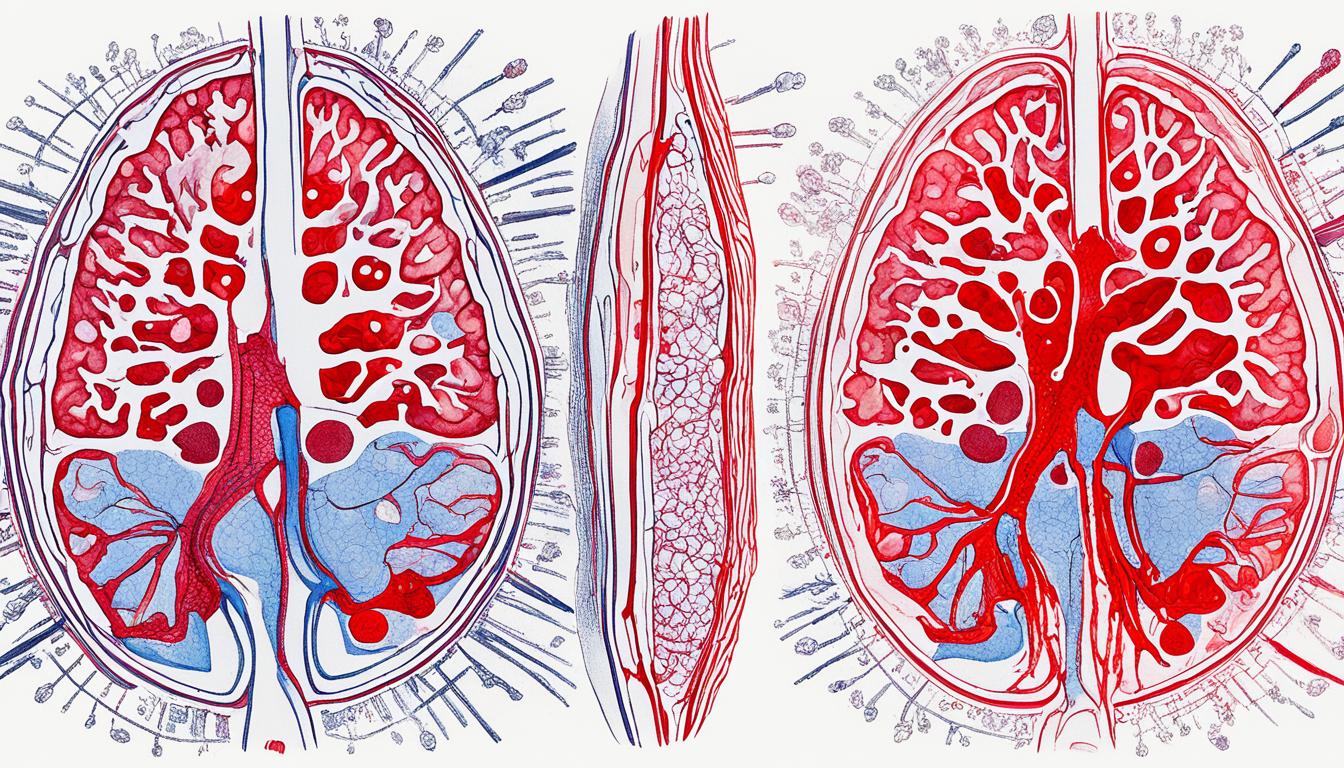Glioma is a brain tumor that starts in glial cells of the brain or spinal cord. It has many types, like astrocytomas and ependymomas. These tumors can be slow-growing or fast-growing and may spread cancer.
The signs of a glioma can vary based on its position, type, and size. You might get headaches, feel sick, or have trouble with how you think and remember. Other signs can be changes in how you behave or see, talk, and have seizures. The cause is likely changes in brain cell DNA, which makes cells grow out of control.
To find out if someone has a glioma, doctors start with a detailed health history. They also do a physical and nerve check and use tools like MRI for pictures. Treatments range from surgery to remove the tumor, to radiation and drugs. Scientists are looking into stem cells as a new way to treat gliomas, but we still need more studies to be sure it works.
Key Takeaways:
- Glioma is a type of brain tumor that starts in glial cells.
- Common symptoms are headaches, feeling sick, memory and thinking problems, and seizures.
- Changes in brain cell DNA are linked to uncontrolled cell growth in glioma.
- Doctors use a deep health check and tools like MRI to diagnose glioma.
- Good treatment options are available, including surgery and radiation.
- Stem cell therapy might be a new hope for treating glioma, but more research is needed.
Symptoms of Glioma
Symptoms of glioma change with the tumor location, type, and size. People with glioma often experience the following:
- Headaches: Many people with glioma get headaches, especially in the morning.
- Nausea and vomiting: This disease can make you feel sick a lot, sometimes causing heavy vomiting.
- Cognitive decline: Gliomas can lower your ability to think, focus, and understand things.
- Memory loss: Glioma can harm your memory, from just forgetting things to losing a lot of your memory.
- Personality changes or irritability: It might change how you show your feelings and act, making you irritable or moody.
- Vision problems: Some brain glioma can damage your eyesight, leading to blurred or lost vision.
- Speech difficulties: It can also mess up your speaking, making it hard to talk clearly or smoothly.
- Seizures: If you didn’t have seizures before, a glioma can start them, needing careful medical treatment.
Recognizing and acting on these symptoms early is crucial. Fast diagnosis helps in a better treatment.
Causes and Risk Factors of Glioma
Gliomas are a type of brain tumor that is not fully understood yet. The exact causes are a mystery to scientists. They do know that changes in the DNA of brain cells are a big part of how gliomas form.
These cell changes make them grow and divide quickly. This results in a tumor growing in the brain or the spinal cord.
There are some things that make getting a glioma more likely:
- Age: Glioma cases often happen in adults aged 45-65. But they can happen at any age. For children and young adults, certain types of gliomas are more common.
- Exposure to ionizing radiation: Being around radiation can bump up your risk of getting a glioma. This includes radiation therapy for treating cancer. It’s important to remember that the benefit of the therapy usually is bigger than the risk.
- Rare familial predisposition: Sometimes, gliomas seem to be more likely in certain families. But this is very uncommon and affects only a small number of cases. More research is needed to fully understand the role of genes in familial gliomas.
For most glioma cases, though, there’s no single direct cause. They can happen for no apparent reason, not linked to genes or things we are exposed to. Researchers are working hard to learn more about gliomas. They want to understand why and how they develop better.
Treatment and Outlook for Glioma
The kind of treatment needed for gliomas depends on many things. This includes where the tumor is, what type it is, and how big it is. The overall health of the person is also a big factor. There are several ways to treat glioma, and each method aims to help in its own way.
Surgery is often the first choice for glioma treatment. It attempts to remove most of the tumor. The goal is to take out as much as possible without hurting the healthy brain. This can improve symptoms and possibly stop the tumor from growing.
Radiation therapy is another treatment option. It uses strong rays to kill cancer cells. Sometimes, radiation is used along with surgery or chemotherapy. This combo can make the treatment more powerful.
Chemotherapy uses drugs to either kill glioma cells or slow their growth. These drugs may be given as pills or through a vein. Another type of treatment, called targeted therapy, aims to stop cancer cells from growing and spreading.
Stem cell therapy is a new area of research for glioma. It looks into using stem cells to fix brain cells that are hurt. Although stem cell therapy is not yet a standard treatment, it might be important in the future.
The outlook for glioma changes based on different things. The type of tumor and how serious it is, the person’s age, and their general health all play a role. Some gliomas, like glioblastoma, are very hard to treat. Yet, research and new treatments give hope for better life quality and outcomes.

